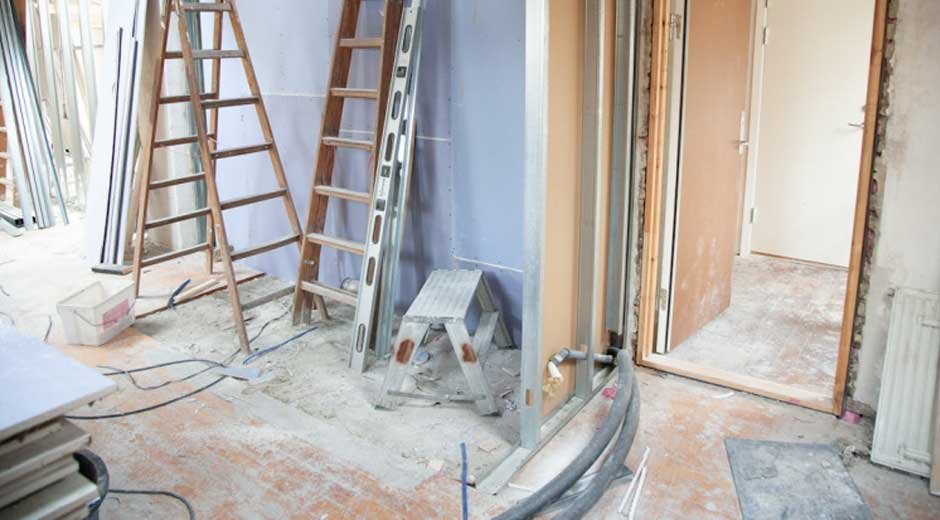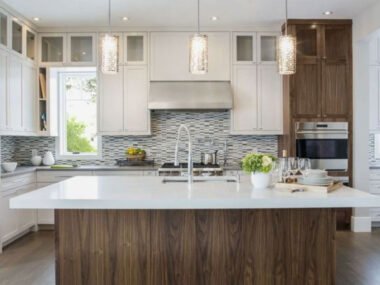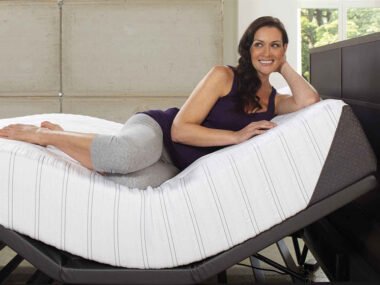Ever looked around your house and thought, “This could feel better, but I don’t want to start knocking down walls”? You’re not alone. Most people want upgrades, but few want a renovation that turns their home into a construction zone. In this blog, we will share how simple home improvements—yes, the kind you can actually finish—make a surprising difference in how a space feels, functions, and even supports your long-term comfort.
Hardware: The Easiest “Renovation” You Can Do in an Hour
Walk through your kitchen or bathroom and pay attention to knobs, pulls, hinges, and faucets. Are they mismatched? Rusted? Straight out of a builder-grade package from 2005? You’re not alone. Hardware is often the last thing people think to change—but one of the quickest ways to update how a space feels.
Modern hardware is inexpensive, easy to install, and comes in every finish and style imaginable. Swapping brushed nickel for matte black or chrome for brass changes the tone of a room without having to change the cabinets or counters. You can buy a set, get a screwdriver, and be finished before dinner.
This kind of upgrade also hits that sweet spot of satisfaction. It doesn’t feel like a chore. It feels like finishing a puzzle—one small piece at a time.
Where Function Meets Fix: Upgrades That Solve Problems First
Not every home improvement needs to feel like a project. In fact, some of the smartest ones solve annoying problems more than they add “wow” factor—and that’s the point. Leaky faucets, slow drains, and poorly sealed fixtures may not sound dramatic, but over time, they quietly drain money and create inconvenience you just learn to live with. Until you don’t.
This is where professional plumbing services make a real impact. Most people don’t think of plumbing upgrades as exciting. They picture emergency calls or frustrating DIY weekends. But the real power of calling in trained professionals is found in routine fixes that are done right the first time. Swapping out old fixtures, improving water pressure, or even rerouting inefficient lines can create immediate results. Suddenly your kitchen doesn’t take five minutes to fill a pot. Your shower holds a steady temperature. Your water bill drops without changing a single habit.
These changes are often fast, affordable, and incredibly satisfying. You don’t need to replace your entire bathroom to improve how it works. Small fixes done professionally lead to big daily improvements. And in today’s world—where people spend more time at home than ever before—those daily experiences matter more than they used to. Comfort is no longer a weekend luxury. It’s a weekday expectation.
Lighting Is the Secret Sauce No One Talks About
You could paint your walls the perfect color, buy the right furniture, and hang carefully chosen art—and still hate how the room feels if the lighting is wrong. Lighting is the one element people often underestimate. But get it right, and it transforms everything else.
Swapping out harsh overhead lights for layered lighting—think a mix of ceiling, floor, and accent lamps—makes a space feel intentional. It softens the mood, warms the colors, and helps rooms feel bigger, calmer, and just better. Smart bulbs add another level, giving you control over warmth and brightness from your phone. And no, it doesn’t need to cost a fortune.
Natural light matters too. Simple adjustments like changing out heavy drapes for lighter curtains or cleaning those window tracks (when was the last time anyone did that?) can let more daylight in. It sounds small, but a sunnier room can change how you feel in it—especially during long work-from-home days.
Paint Isn’t Magic, But It’s Close
There’s a reason every HGTV transformation includes fresh paint. It works. It’s not complicated. It doesn’t require power tools. And the effect is immediate. You don’t need to repaint the whole house, either. A single room—or even one wall—can refresh the energy in a space you’ve gotten used to ignoring.
Beyond color trends, consider finishes. Matte absorbs light and hides flaws. Gloss reflects and adds bounce to smaller areas. Semi-gloss is practical for kitchens or bathrooms. And if you think choosing paint is just about aesthetics, you haven’t had to scrub spaghetti sauce off a flat-finish wall.
Paint changes how we perceive size, temperature, and light. Cool tones create calm. Warm tones energize. Dark colors cozy up large spaces, while light shades open up small ones. When done right, a can of paint can do more for a room than most furniture upgrades.
The Outdoors Counts More Than Ever
Recent years have made outdoor spaces more valuable than ever—both for health and for sanity. Whether you’ve got a yard, a balcony, or a front porch, investing even a little time and money outside goes a long way.
Simple upgrades like string lights, potted plants, or weather-resistant seating can turn an unused patch of concrete into a second living room. You don’t need a green thumb or a design degree. Just a few thoughtful elements—a rug to define the space, cushions that survive a rainstorm, maybe a table for morning coffee—change how you use your home.
And don’t ignore curb appeal, even if you’re not planning to sell. Repainting the front door, adding a new house number, or planting a few shrubs can refresh your home’s look and feel. It boosts pride of ownership and makes coming home feel good.
Home Improvements Reflect Broader Shifts in How We Live
There’s a reason home improvement spending hasn’t slowed down, even with inflation and rising costs. People aren’t just improving homes to raise resale value. They’re improving them because they now spend more time inside, work from home more often, and need their living spaces to actually support their lives.
The traditional division between “home” and “outside world” has blurred. Kitchens double as offices. Bedrooms double as gyms. Living rooms have to accommodate everything from remote school to therapy sessions. These shifts mean that function, comfort, and flow matter more than ever.
Small upgrades meet those new expectations without requiring massive investments. They help homes evolve without becoming construction zones. And they prove that change doesn’t have to be overwhelming to be meaningful.










